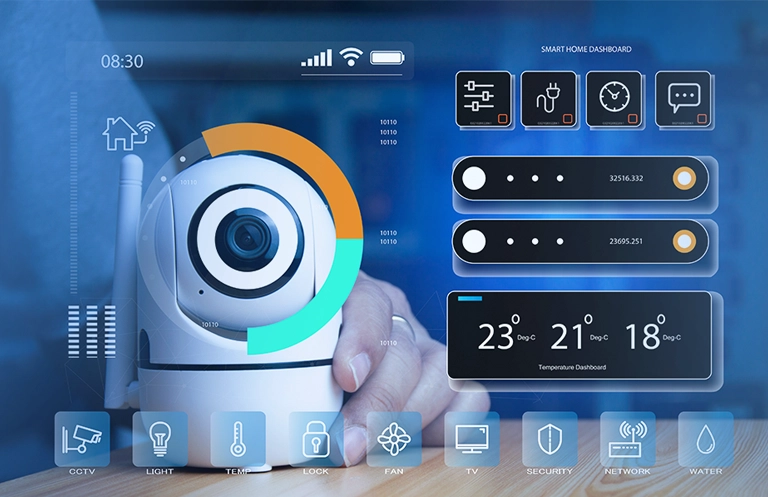Aren’t we spoiled rotten with Google Voice and Apple Siri? NEST went a long way with the thermostat. In fact, it went far enough to interest Google! Devices are developing serious IQ, while we look at them to do the legwork. This solution, which raises the thermostat temperature when you feel ‘chilly’, is a part of a larger conspiracy – Smart Cities. Apparently Grandpa doesn’t like it!
This is the new ‘race’ between urban communities. Which is the best city to live in? Which city offers you the best quality of life? The overall experience of living in a city is an amalgamation of various community touch points. It includes the home, the workplace, the store, the car, the amusement part, the public transit system, the healthcare facility, and the utilities company among other points of interaction.
Let us begin with the Smart Home. A smart home improves comfort, safety and security for its residents, increasing the quality-of-life at a place that the resident will probably spend a maximum amount of their time. The control panel, or console, is typically based on Android or QNX and operates hundreds of peripherals like motion sensor, flood sensor, thermostat, CO sensor, IP camera, door sensor etc. The console, however, is also replicated on mobile applications that can control these peripherals. Interoperability and complexity management are the biggest concerns with every new upgrade on the console, the mobile OS and the peripheral devices. Thorough testing of corner cases is essential in making sure that fixing a problem does not throw up a dozen more.
A smart home concept has matured significantly over the past decade, with newer efficient solutions for last-mile connectivity. The endpoint communication technology has become significantly more efficient and secure with ZigBee™, Wi-Fi and Bluetooth Low Energy (BLE). Considering that the console is in continuous communication with multiple devices, it is essential that the device is power efficient. If Grandpa does not like the thermostat, I am sure he will be floored with the extent to which Internet-of-Things (IoT) for home is moving forward.
eInfochips has contributed to the design and testing of home automation systems that are deployed in a million homes already. The company has recently launched the System-on-Module (SoM) and Development Kit called the Eragon600, based on Qualcomm® Snapdragon™ 600, a product of Qualcomm Technologies, Inc.
 The Eragon600 SoM is ideal for Home Automation and Security applications, as it is based on Qualcomm® Snapdragon™ 600 processor.. They work on the same connectivity principles (Wi-Fi, BLE, Cellular) and are power efficient with the Qualcomm® Krait™ CPU architecture from Qualcomm Technologies, Inc. Multiple interfaces enable a sensor (and actuator) network that supports advanced monitoring and control features on the system. It comes with an on-board Qualcomm® Adreno™ 320 GPU and Qualcomm® Hexagon™ DSP from Qualcomm Technologies, Inc. for imaging, video fusion and video analytics. They also include an intuitive GUI, enabling a responsive user interaction with the smart home.
The Eragon600 SoM is ideal for Home Automation and Security applications, as it is based on Qualcomm® Snapdragon™ 600 processor.. They work on the same connectivity principles (Wi-Fi, BLE, Cellular) and are power efficient with the Qualcomm® Krait™ CPU architecture from Qualcomm Technologies, Inc. Multiple interfaces enable a sensor (and actuator) network that supports advanced monitoring and control features on the system. It comes with an on-board Qualcomm® Adreno™ 320 GPU and Qualcomm® Hexagon™ DSP from Qualcomm Technologies, Inc. for imaging, video fusion and video analytics. They also include an intuitive GUI, enabling a responsive user interaction with the smart home.
eInfochips offers engineering services to companies looking to develop complex systems. With 1500 professionals, eInfochips has contributed to 500+ products for global companies across USA, Europe and Asia. eInfochips has just launched their Eragon600 System-on-Module (SoM) and Development Kits for companies to integrate the Snapdragon 600 on their drone platforms. It comes with advanced communication interfaces and is complimented with development services and support from eInfochips experts. eInfochips team has already contributed solutions to multiple UAV products for military and civilian applications.
For more information, you can write to marketing@einfochips.com.













